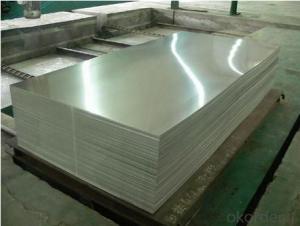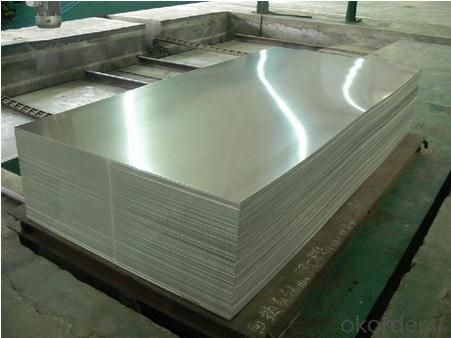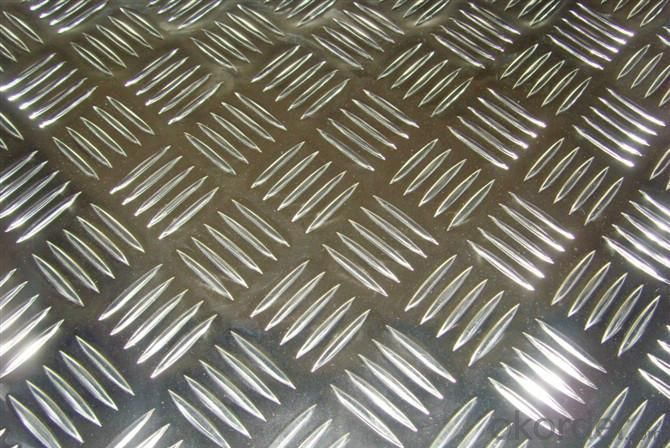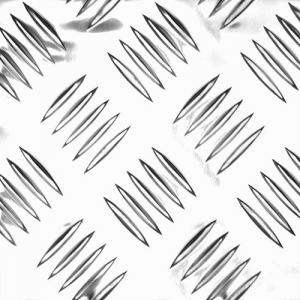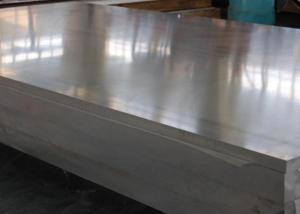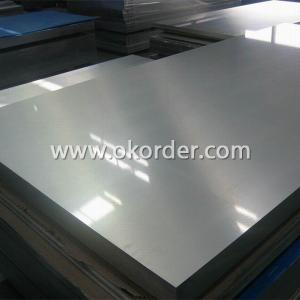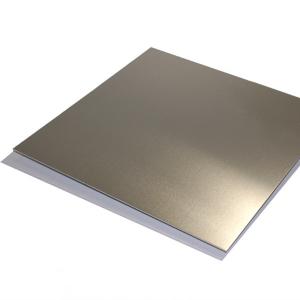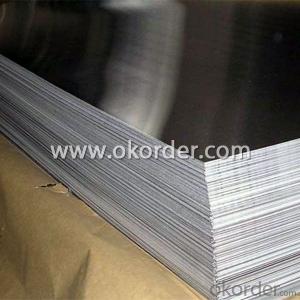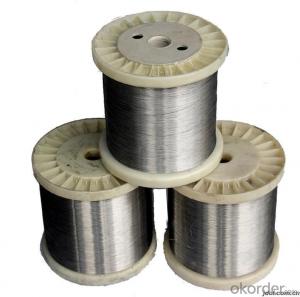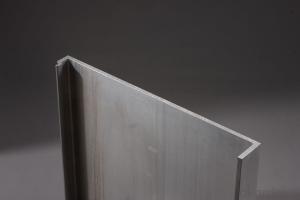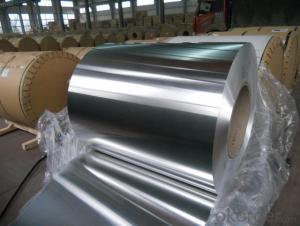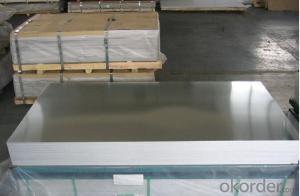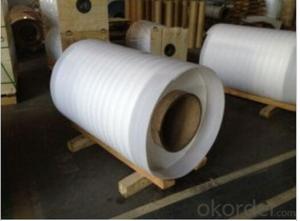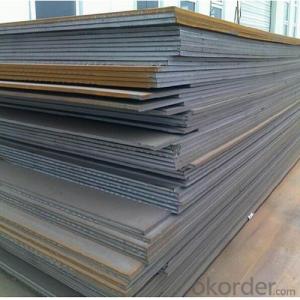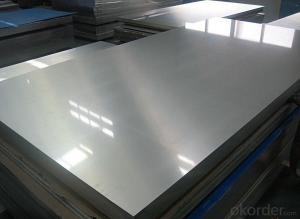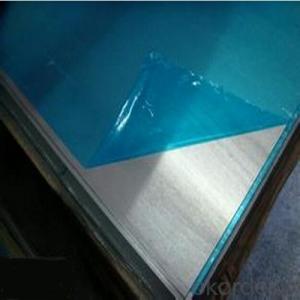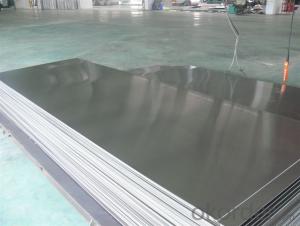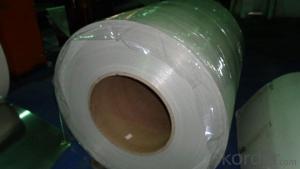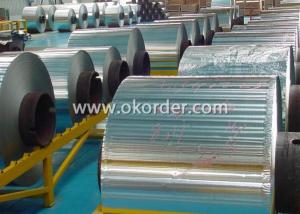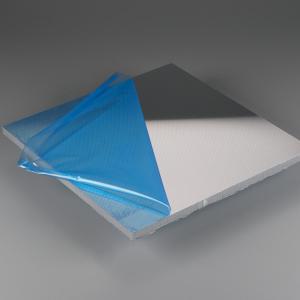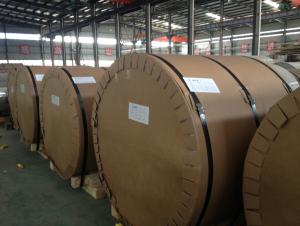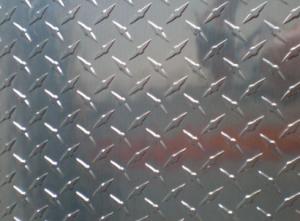Small Aluminum Baking Sheets for Building Exterior Decoration
- Loading Port:
- Shanghai
- Payment Terms:
- TT OR LC
- Min Order Qty:
- 5 m.t.
- Supply Capability:
- 50000 m.t./month
OKorder Service Pledge
OKorder Financial Service
You Might Also Like
Specification
Description
| Finished Aluminium Sheet Used For Building Exterior Decoration | |||||
Alloy No. | Thickness (mm) | Width (mm) | Length (mm) | Temper | |
A1050,A1060, A1070, A1100 | 0.2-100 | 20-2200 | 20-8000 | O,H12,H22,H14,H16,H18, H24,H26,etc | |
3A21, A3003, A3105, A3004 | 0.2-100 | 20-2200 | 20-8000 | O,H14,H18,H24,etc | |
A5052, A5005, A5083, A5754 | 0.2-100 | 20-2200 | 20-8000 | O,H18,H24,H32,H34,H111,H112 ,etc | |
A6061, A6082, A6063 | 0.2-200 | 20-2200 | 20-8000 | T4,T6, T651,etc | |
A8011 | 0.2-100 | 20-2200 | 20-8000 | O,H12,H22,H14,H16,H18,H24,H26, etc | |
Packing: Export wooden pallets. The bundle weight not exceed 2MT. Loading: by 1x20GP, 1X20GP can load about 25MT. | |||||
Standards: ASTM-B209. EN573-1, GB/T3880.1-2006 | |||||
Quality of material: totally free from defects like white rust, oil patches, roll marks, edge damage, camber, dents, holes, break lines, scratches and free from coil set. | |||||
Application : Mainly used insigns, billboards, building exterior decoration, bus body, high-rise buildings and factories wall decoration, kitchen sink, lamp, fan leaves, with pieces of electronic, chemical equipment, sheet metal processing parts, deep drawing or spinning hollowware, welding parts, heat exchangers, bell surface and disk, plate, kitchenware, decorations, reflective devices, ect | |||||
MOQ | 5 tons | ||||
Payment term | T/T,L/C | ||||
Delivery Time | 15-60 days after 30% T/T payment or receiving L/C copy | ||||
Kind attention: Specifications can be customized as the customer’s requirements. | |||||
PVDF and PE coated aluminium coils/sheets:
PVDF color pre coated aluminum coils/ sheets:
It is well known that fluorocarbon lacquer coating (PVDF coating) owes the best acid resistant/alkali and temperature tolerant capabilities of all painting materials. Being the best quality of precoated aluminum, PVDF coated coils are especially suitable for outdoor roofing walls and ceiling manufacturing.
Polyester (PE) color pre coated aluminum coils/ sheets :
Using high-grade polyester lacquer coating material, the finished coated coils are with delicate color uniform texture, color and diverse. It is the most popular and most common used materials in decorative usage. The PE coated aluminum are widely used in ACP( aluminum composite panel ) production and indoor ceiling usage.
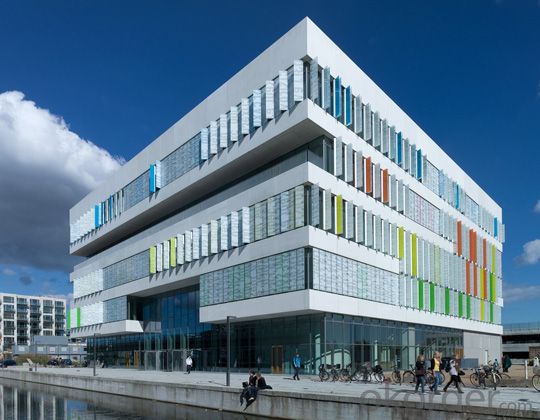
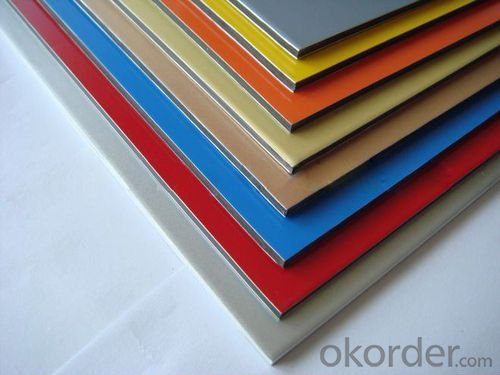
Production facilities and processing range
Equipments | Quantity | Thickness range | Width range | Length range | Max loading weight |
Continuous casting rolling mill | 23 | 6.0-10.0mm | 1000-2000mm | ------------- | 15000kgs |
Cold rolling mill | 2 | 0.1-6.0mm | 900-1700mm | ------------- | 12000kgs |
High accuracy cold rolling line | 1 | 0.1-1.0mm | 650-1420mm | ------------- | OD 2000mm |
Annealer | 14x40T | ------------- | -------------- | ------------- | ------------- |
Coating line | 3 | 0.15-1.5mm | 600-1600mm | ------------- | 5000kgs |
Embossing line | 1 | 0.2-1.2mm | 350-1300mm | ------------- | 8500kgs |
Straightening line | 1 | 0.1-2.0mm | 600-1700mm | ------------- | 10000kgs |
Slitting line | 1 | 0.2-3.0mm | 21-1595mm | ------------- | 10000kgs |
Wave shearing line | 1 | 0.13-0.5mm | 550-1230mm | ------------- | 10000kgs |
Shearing line | 3 | 0.125-4.0mm | Max 1700mm | ------------- | 10000kgs |
FAQ
Q: Can you provide free samples?
A: Yes, free samples will be sent to you on freight at destination.
Q: Can I get your latest catalogue?
A: Yes, it will be sent to you in no time.
Q: What are your payment terms?
A: We accept L/C, D/A, D/P, T/T, West Union, etc
Q: Can you provide free samples?
A: Yes, free samples will be sent to you on freight at destination.
Q: Can I get your latest catalogue?
A: Yes, it will be sent to you in no time.
Q: What is the MOQ?
A: 5 tons.
Q: What are your payment terms?
A: We accept L/C, D/A, D/P, T/T, West Union, etc
- Q: I've created a sculpture out of aluminum foil, but it's pretty flimsy. What can I paint or cover it with that would harden and support it? I was thinking a resin or something, but I have no experience with resins or epoxies... Any suggestions?
- Rigid Wrap is plaster-infused gauze. You can buy it at the art supply store or at a medical supply store. The latter is cheaper. It comes on a roll so you can cut off small chunks. Wet each piece and apply it to your sculpture. The first layer may be the most difficult. I would wrap the plaster gauze around the structure so the gauze overlaps gauze. It may not stick to the aluminum but it will stick to itself. Start at the bottom and let it dry, then add another layer. As mentioned, adding too much may compromise the structure so work slowly and allow time to dry between layers.
- Q: Can aluminum sheets be anodized in different colors?
- Yes, aluminum sheets can be anodized in different colors. Anodizing is an electrochemical process that enhances the natural oxide layer on the surface of aluminum. By immersing the aluminum sheet in an electrolyte bath and applying an electric current, a controlled oxidation process occurs, resulting in a thick and durable layer of oxide on the surface. During the anodizing process, various dyes can be added to the electrolyte bath, allowing the aluminum to absorb the dye molecules and create a colored oxide layer. This allows for a wide range of colors to be achieved, including red, blue, green, yellow, and many others. Additionally, the intensity and shade of the color can be controlled by adjusting factors such as the concentration of the dye and the voltage applied during the anodizing process. The anodized layer formed on the aluminum sheet not only provides a vibrant and aesthetically pleasing appearance but also improves its corrosion resistance and durability. This makes anodized aluminum sheets an excellent choice for architectural, decorative, and industrial applications where color customization is desired while maintaining the inherent benefits of aluminum.
- Q: What are the applications of aluminum sheets?
- The unique properties and versatility of aluminum sheets make them applicable in a wide range of industries. Some common uses for aluminum sheets include: 1. Construction: Aluminum sheets are utilized in various construction applications such as roofing, siding, gutters, and facades. They offer exceptional durability, resistance to corrosion, and the ability to withstand extreme weather conditions. 2. Transportation: The transportation industry extensively employs aluminum sheets, particularly in the manufacturing of automobiles, airplanes, trains, and ships. Their lightweight nature helps reduce fuel consumption, improve vehicle performance, and maintain strength and durability. 3. Packaging: Aluminum sheets are widely used in the food and beverage industry for packaging purposes. They are used in the production of cans, foils, and containers due to their ability to protect the contents from light, moisture, air, and bacteria. 4. Electronics: Aluminum sheets play a role in the production of electronic devices like laptops, smartphones, and tablets. Their excellent thermal conductivity properties make them ideal for heat dissipation, ensuring the longevity and performance of electronic components. 5. Industrial applications: Aluminum sheets find applications in various industrial sectors, including aerospace, marine, chemical, and energy. They are used to manufacture heat exchangers, tanks, pipes, and other equipment due to their corrosion resistance and high strength-to-weight ratio. 6. Decorative purposes: Aluminum sheets are also used for decorative purposes in architecture and interior design. They can be easily shaped, colored, and textured to create attractive facades, wall panels, ceilings, and furniture. 7. Reflective surfaces: Aluminum sheets are commonly employed for their reflective properties. They are used in mirrors, solar panels, light fixtures, and reflective signage to enhance brightness and improve energy efficiency. In conclusion, the exceptional properties of aluminum sheets make them widely applicable in various industries. Their lightweight nature, durability, resistance to corrosion, and thermal conductivity make them the preferred choice for construction, transportation, packaging, electronics, industrial applications, decoration, and reflective surfaces.
- Q: Can 101 aluminum sheets be used in the production of solar reflectors?
- Yes, 101 aluminum sheets can be used in the production of solar reflectors. Aluminum is a widely used material in the solar industry due to its high reflectivity and durability. The number 101 refers to the specific alloy composition of the aluminum, which usually indicates that it is a pure aluminum or a low alloy variant. Pure aluminum has excellent reflective properties, making it ideal for solar reflectors that need to efficiently redirect sunlight onto solar cells or panels. However, it is important to consider other factors such as thickness, surface finish, and any additional coatings or treatments that may be required for optimal performance in solar reflector applications.
- Q: How much is a square inch of a millimeter aluminum plate?
- Weight 2.68 kg / square meterThis explanation is not difficult to explain the same square metre. Why is the weight different?
- Q: What are the potential environmental issues that arise from the use of aluminum sheets?
- <p>Yes, there are environmental concerns related to using aluminum sheets. The production process is energy-intensive and contributes to greenhouse gas emissions. Additionally, the mining of bauxite, the primary source of aluminum, can lead to deforestation and habitat destruction. The disposal of aluminum waste can also lead to pollution if not properly managed. However, aluminum is highly recyclable, which can mitigate some of these concerns if recycling practices are adopted widely.</p>
- Q: What are the properties of anodized aluminum sheets?
- Anodized aluminum sheets have several distinct properties that make them highly desirable for various applications. Firstly, anodized aluminum sheets have a protective oxide layer on their surface, which enhances their corrosion resistance. This oxide layer is formed through an electrochemical process called anodization, where the aluminum sheet is treated with an electric current in an acid electrolyte solution. This protective layer makes anodized aluminum sheets more durable and capable of withstanding harsh environments, which makes them suitable for outdoor applications. Another notable property of anodized aluminum sheets is their enhanced scratch resistance. The anodization process not only creates a protective layer but also hardens the surface of the aluminum, making it more resistant to scratches and wear. This property is particularly advantageous in applications where the aluminum sheets are subjected to frequent handling or abrasive conditions. Furthermore, anodized aluminum sheets can be produced in a wide range of colors. The anodization process allows for the integration of dyes or pigments into the oxide layer, resulting in a variety of vibrant color options. This property makes anodized aluminum sheets popular in architectural and decorative applications, as they can be customized to match specific design requirements. Additionally, anodized aluminum sheets have excellent thermal and electrical conductivity. The process of anodization does not significantly affect these inherent properties of aluminum. Therefore, anodized aluminum sheets can efficiently dissipate heat and conduct electricity, making them suitable for applications such as heat sinks, electronic enclosures, and electrical components. In summary, the properties of anodized aluminum sheets include enhanced corrosion resistance, improved scratch resistance, a wide range of color options, and excellent thermal and electrical conductivity. These properties make anodized aluminum sheets a versatile and durable material for various industries and applications.
- Q: What are the different thickness tolerances for aluminum sheets?
- The thickness tolerances for aluminum sheets can vary depending on the specific grade and manufacturing process, but generally they range from ±0.005 inches to ±0.015 inches.
- Q: Are aluminum sheets resistant to abrasion?
- Yes, aluminum sheets are generally resistant to abrasion due to their hardness and durability.
- Q: Can aluminum sheet be used for automotive heat shields?
- Yes, aluminum sheet can be used for automotive heat shields. It is a commonly used material due to its high thermal conductivity, lightweight nature, and excellent heat resistance properties.
Send your message to us
Small Aluminum Baking Sheets for Building Exterior Decoration
- Loading Port:
- Shanghai
- Payment Terms:
- TT OR LC
- Min Order Qty:
- 5 m.t.
- Supply Capability:
- 50000 m.t./month
OKorder Service Pledge
OKorder Financial Service
Similar products
Hot products
Hot Searches
Related keywords
